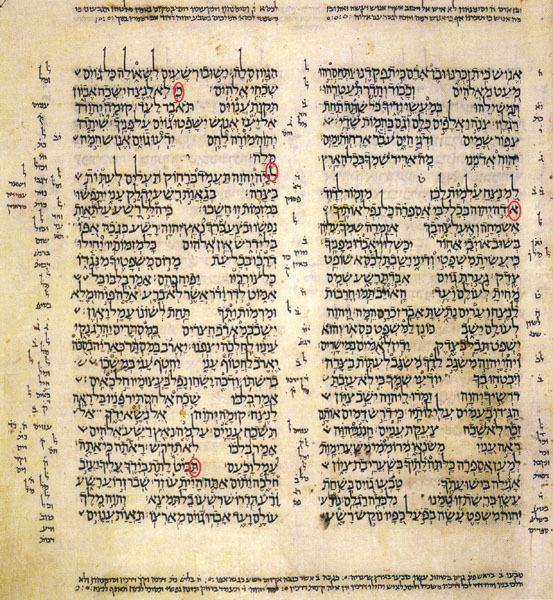Image Details

Photograph by Bruce and Kenneth Zuckerman, West Semitic Research in collaboration with The Ancient Biblical Manuscript Center
Are Psalms 9 and 10 backwards? Written as partial acrostics, the two psalms follow the order of the Hebrew alphabet as we know it today (see sidebar to this article): Psalm 9 begins with an aleph (highlighted in the right column of this page from the 11th-century Leningrad Codex, the oldest complete manuscript of the Hebrew Bible) and ends with a line that starts with kaf (near the top of the left column, within a paragraph in the codex’s prose form of the text). Psalm 10 goes from lamed (also highlighted, in the left column) to tav (lower left). The two psalms, however, seem to be reversed thematically. John Strugnell and Hanan Eshel, authors of the accompanying article, suggest that Psalm 10, which complains of the wicked and asks for God’s assistance, originally might have preceded Psalm 9, a psalm of praise and thanksgiving. But the acrostic embedded in the two psalms seems to preclude such an order. Or does it? Strugnell and Eshel suggest that in ancient times the order of the alphabet may not have been firmly fixed and that what we think of as the second half of the alphabet may occasionally have come first. As support for their position, they cite the Latin word elementum, which may derive from the first letters of the alternative alphabet—l, m, n.
